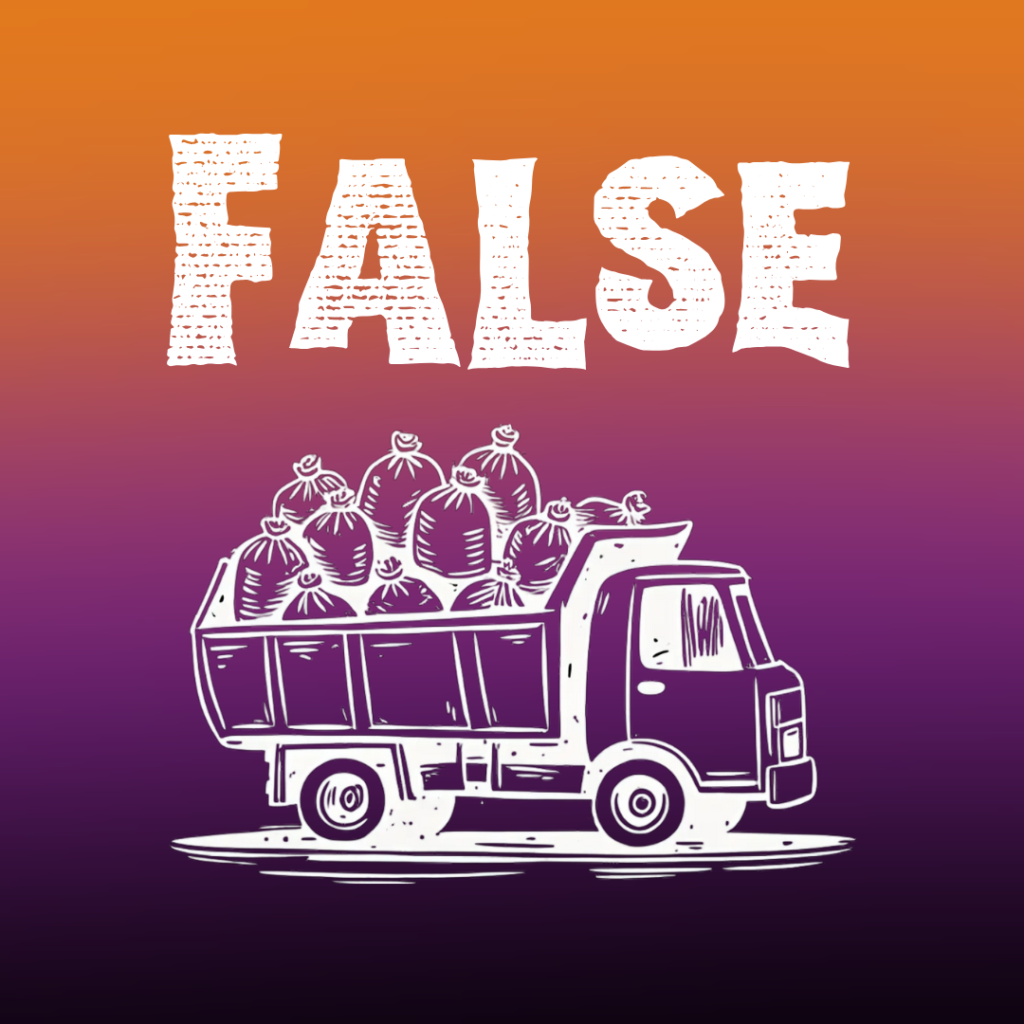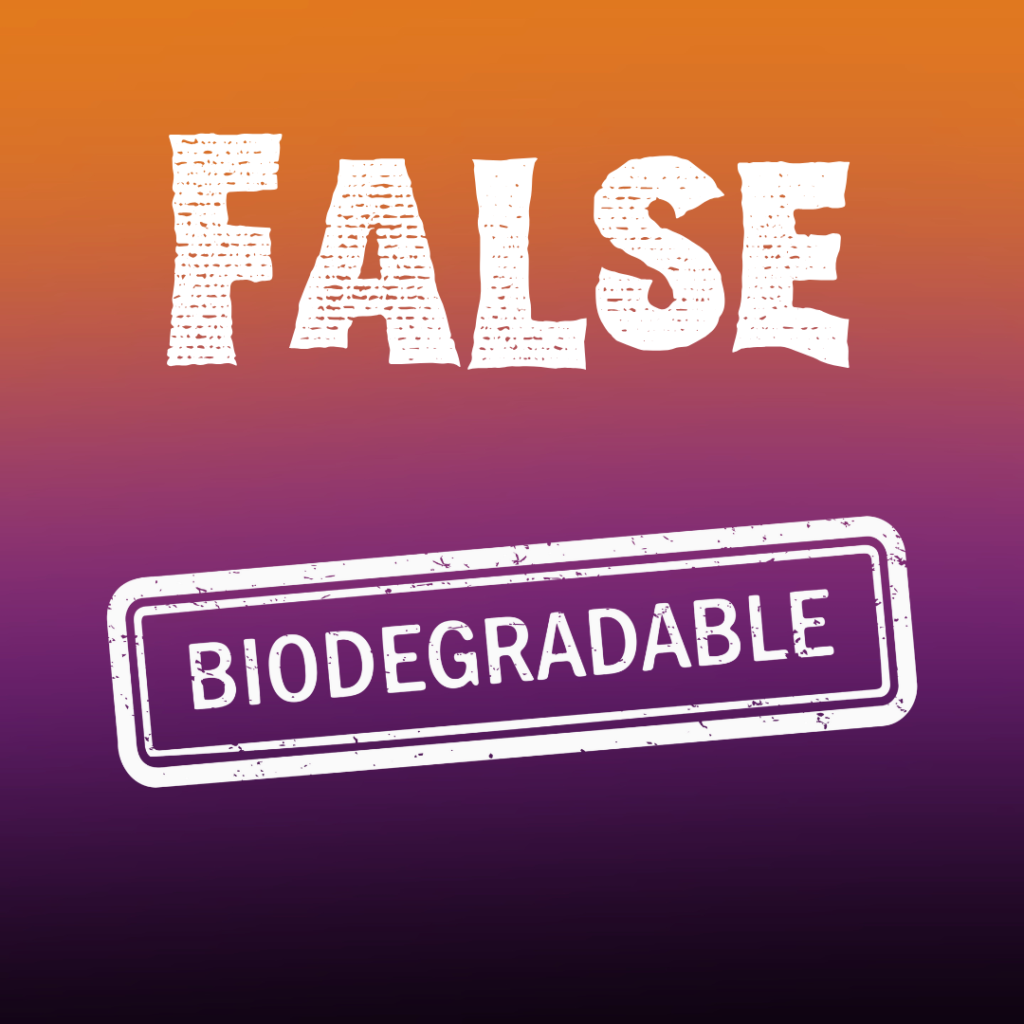Haunted by Recycling Myths? Let’s Bury Them for Good!
Don’t let misinformation spook your good recycling habits—habits that are critical to protecting our natural resources and climate. This Halloween season, let’s illuminate the truth and lay these recycling myths to rest once and for all.
It’s that time of year when scary stories and myths creep up—and Zero Waste is no exception! Read on to learn the most common urban legends about recycling, composting, and reuse.
MYTH: Recycling is broken—it all ends up in the landfill anyway.
FALSE! This undead rumor just won’t die, but here are the facts: recycling works when we recycle right. If you live in Boulder County, your curbside recyclables are processed locally at the Boulder County Recycling Center (BCRC), operated by Eco-Cycle, where materials are sorted, baled, and sold to domestic and North American markets with whom we have developed partnerships since 1976. As a nonprofit mission-based recycler, it’s not in the realm of our business model to landfill materials.

The real problem isn’t recycling—it’s contamination and confusion. Stick to our Recycling Guidelines for Boulder County, and your recyclables will live to see another life! Still not convinced? Come see for yourself! Or watch a video showing processing at the BCRC.

MYTH: Recycling uses so much energy it’s bad for the environment.
FALSE! Don’t let this myth suck the life out of your recycling efforts! Recycling actually saves tons of energy compared to making products from virgin natural resources. For example:
- Recycling aluminum saves 95% of the energy used to make new cans from raw materials. Recycling just one aluminum can saves enough energy to power your favorite spooky movie marathon for three hours!
- Recycling 10 plastic bottles saves enough energy to power a laptop for over 25 hours—long enough for a full day and night of Halloween chills!
Recycling also conserves natural resources, reduces greenhouse gas emissions, and supports local jobs. Now that’s a treat, not a trick!
MYTH: Rinsing recyclables wastes water, so it’s not worth it.
FALSE! The water used for rinsing is just a tiny fraction of what’s used in making new items from extracted natural resources. Recycling helps save much more water in the long run than what goes down the drain dishwashing!

You don’t need to give your recyclables a deep clean! Just make sure food and drink containers are empty and mostly free of residue. A quick scrape, rinse, or shake with a little water will do the trick. For those sticky containers (like peanut butter jars), scraping out the food thoroughly is good enough—or let your dog take care of it!

MYTH: Packaging labeled “biodegradable” is automatically green or compostable.
FALSE! Terms like “biodegradable,” “eco-friendly,” or “plant-based” may sound good for the planet—but these labels are not regulated in the US for packaging and often mislead well-intentioned consumers.
When used to refer to packaging, “biodegradable” simply means the material can break down into smaller components through natural processes over time. But here’s the catch: many so-called “biodegradable” packages are made from both plant-based AND plastic materials. When they do break down, they can produce microplastics—tiny pollutants that harm ecosystems. These items aren’t specifically designed to decompose safely in municipal compost systems, nor are they necessarily safer or made from “greener” materials.
REMINDER: Even products labeled “certified compostable” are not generally accepted in most Front Range curbside compost programs. Please use your curbside compost bin for food scraps and yard trimmings only, and check our compost guidelines to be sure of what goes where.
MYTH: A recycling “chasing arrows” symbol on a package means it can go in the recycling bin.
FALSE! That little “chasing arrows” symbol can be misleading! It is a largely unregulated symbol and doesn’t guarantee recyclability. Plastic manufacturing companies, in particular, put this symbol on nearly all their products despite the fact that many plastics are not recyclable.

The best way to know whether something is recyclable isn’t by the labeling on the package, but by looking at your local recycling guidelines. Our Recycling Guidelines for Boulder County include plastic bottles, tubs, jugs, and jars, which are most commonly labeled with a #1, #2, or #5 inside the arrow. Beware the “wanna-be recyclable” materials like styrofoam cups and meat trays that have a #6 inside the chasing arrows symbol. They are a recycling nightmare, and should stay out of your curbside bin!

MYTH: Food scraps and yard clippings decompose the same in a landfill as they do in a compost pile.
FALSE! Organic materials like food scraps and yard clippings need oxygen to break down. In a compost pile—with plenty of air flow—microbes help them decompose quickly, creating a nutrient-rich humus. When applied to landscapes, finished compost nourishes plants, improves water retention, and boosts the soil’s ability to store carbon. It’s a win all around!
On the flip side, landfills are designed to be airtight. Without oxygen, organics break down anaerobically, producing methane, an extremely powerful greenhouse gas that traps 84 times more heat than carbon dioxide. Don’t let your food scraps or fallen leaves and grass clippings rot in the landfill’s crypt—compost it instead!
MYTH: All paper products are recyclable.
FALSE! While most paper items like office paper, mail, newspapers, and cardboard are recyclable, there are some ghoulish exceptions that should steer clear of your recycling bin! Beware of paper towels, plastic-coated paper, and paper that is soiled with food or grease. Here’s why:

- Paper towels and napkins— The fibers in paper towels and napkins are too short to be recycled. These items can easily be avoided with reusable alternatives. If you do have single-use towels or napkins and reside in Colorado’s Front Range, including Boulder County, these items also cannot go in your curbside composting bin, but can be included as a carbon source in your backyard compost pile. Some programs in the state do allow these items in curbside compost collection, so check with your hauler’s guidelines before putting them in the compost cart.
- Plastic-coated paper—like frozen food boxes, ice cream cartons, and to-go cups—have a sneaky plastic layer that makes them non-recyclable in most areas. The exception is paper cartons for products like milk, juice, and non-dairy milks and soups; these items ARE widely recyclable. Check your local recycling rules to know what’s recyclable at your local recycling facility.
- Paper and cardboard with food debris and grease are also cursed for recycling because they will start to biodegrade the fibers. Tear off the clean sections (like the unsoiled top of a pizza box) and recycle that—banish the rest to the trash!

MYTH: All glass is recyclable in your curbside recycling bin.
FALSE! While glass bottles and jars are recyclable and can be turned into new glass infinitely, not all types of glass are recyclable.
- PUT IN YOUR CURBSIDE RECYCLING BINS: Glass bottles, jugs, and jars. But beware—leave the lids off, and check local guidelines to see if the lids are recyclable separately! In Boulder County, metal and plastic lids larger than 2 inches can be recycled, while smaller metal ones should be added to your scrap metal collection and brought to a special recycling facility that accepts scrap metal, such as the Eco-Cycle/City of Boulder Center for Hard-to-Recycle Materials (CHaRM) or Longmont Recycling Center. Plastic caps and lids smaller than 2 inches in diameter should be put in the trash.
- Other glass (drinking glasses, vases, plates, and cups, etc.): These glass houseware items have different melting points and can’t be recycled with food and beverage glass bottles and jars. Eco-Cycle’s CHaRM facility accepts them for drop-off, but your curbside recycling bin cannot!
Can’t get enough myth-busting?
Check out our Frequently Asked Questions for recycling in Boulder County.


